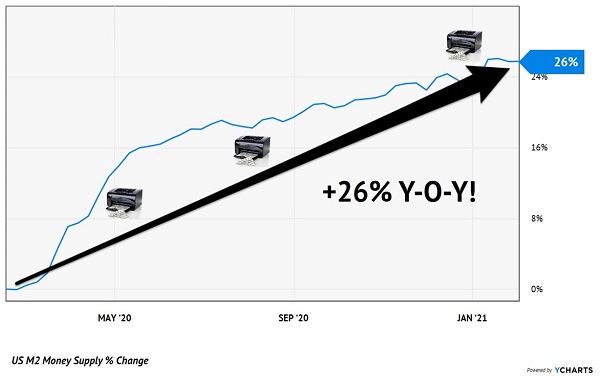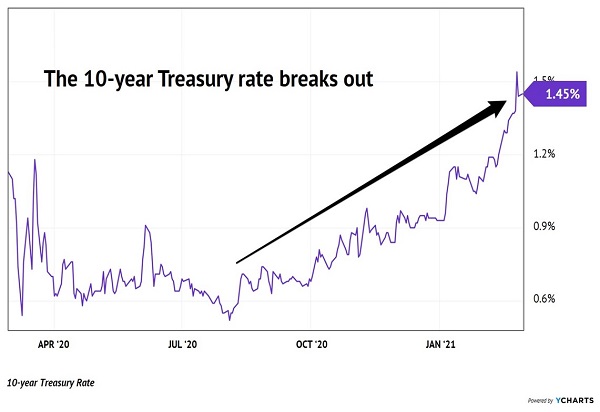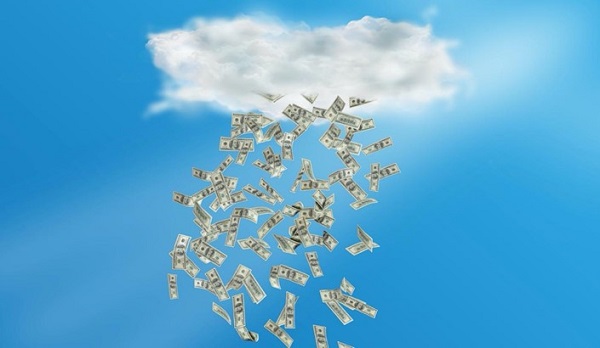What a time to be alive! The stock market is booming, and many of our favorite income investments are ticking higher every day.
Sure, we need to credit all of the money that our intrepid Fed chair Jay Powell has printed in the last year. But with the 10-year rate spiking, we now need to ask ourselves:
Is inflation here already?
Recently, I noted that Fed Chair Jay Powell was doing quite the impression of the infamous 1700s economist John Law, who was the original money printer. (And noted gambler, womanizer, speculator, and creator of multiple manias that included the Mississippi Bubble and South Sea Bubble. Law had quite the resume!)
Powell pulled the lever on the money printing quantitative easing machine early and often last year. Back in 2008, the Fed didn’t get into “extraordinary measures” until things got dicey later that year. Powell skipped the foreplay and tossed a few trillion onto the table. In doing so, all previous records were smashed in the largest money creation event of all-time (as defined by M2, the measure of the amount of money “out there” in circulation):
The Biggest Money Bump… Ever

Trillions of dollars appeared out of thin air. Inflation worries are now bubbling to the forefront of the financial airwaves. Recent action in the 10-year Treasury is reflecting this.
Are the “Bond Vigilantes” Finally Waking Up?

And hey, what a strange world we live in. Did you ever think we’d be worried about a “moonshot” run towards 2% in the 10-year yield?
Seasoned income investors will recall James Carville’s famous quote in 1993:
“I want to come back as the bond market. You can intimidate everybody.”
Carville’s original quote paid homage to a powerful (yet somewhat mythical) group called the “bond vigilantes.” The greater the risk in the system, the higher the yield bond buyers demand to lend their money. No risk skates past them without a fee.
In the early 1990s, bond yields seemed to spike whenever the federal government was tempted to spend beyond its means. These higher “vigilante powered” rates punished the reckless spenders in Washington with higher debt costs—and ultimately pressured them towards austerity.
Of course, a spike in the M2 money supply doesn’t necessarily correlate to inflation. In fact, in recent decades it hasn’t predicted much at all! Our biggest experiment—2008—had many pundits predicting inflation “soon” after the crisis ended and the economy recovered. It never happened, and the Ben Bernanke-led Fed was largely lauded for its actions as a result.
Personal incomes are still going to take a hit at some point when the gravy train slows down. And we’ll once again see deflation take the upper hand, and perhaps a pullback in stocks to accompany this. When our current stimulus runs out, some of this newly found capital will return to “Money Heaven” in the sky:
Remember, It’s a Two-Way Street

We’ll keep an eye on this situation for the rest of 2021 and beyond. If and when we do see inflation kick in, it’ll be time to reposition our fixed-income portfolio.
Urgent note from the publisher: I recently asked Brett to put together the Perfect Income Portfolio, a collection of dividend payers that:
- Boast generous yields (at least 4X the dividends of blue-chip stocks),
- Are “built to last” whether rates rise or fall, and
- Are recession-proof.
I don’t know where interest rates are going from here. I’m also skeptical about this economic recovery. Hence the need for Brett’s perfect income investments.
Click here to earn 4X the retirement income that most regular portfolios generate.

Recent Comments